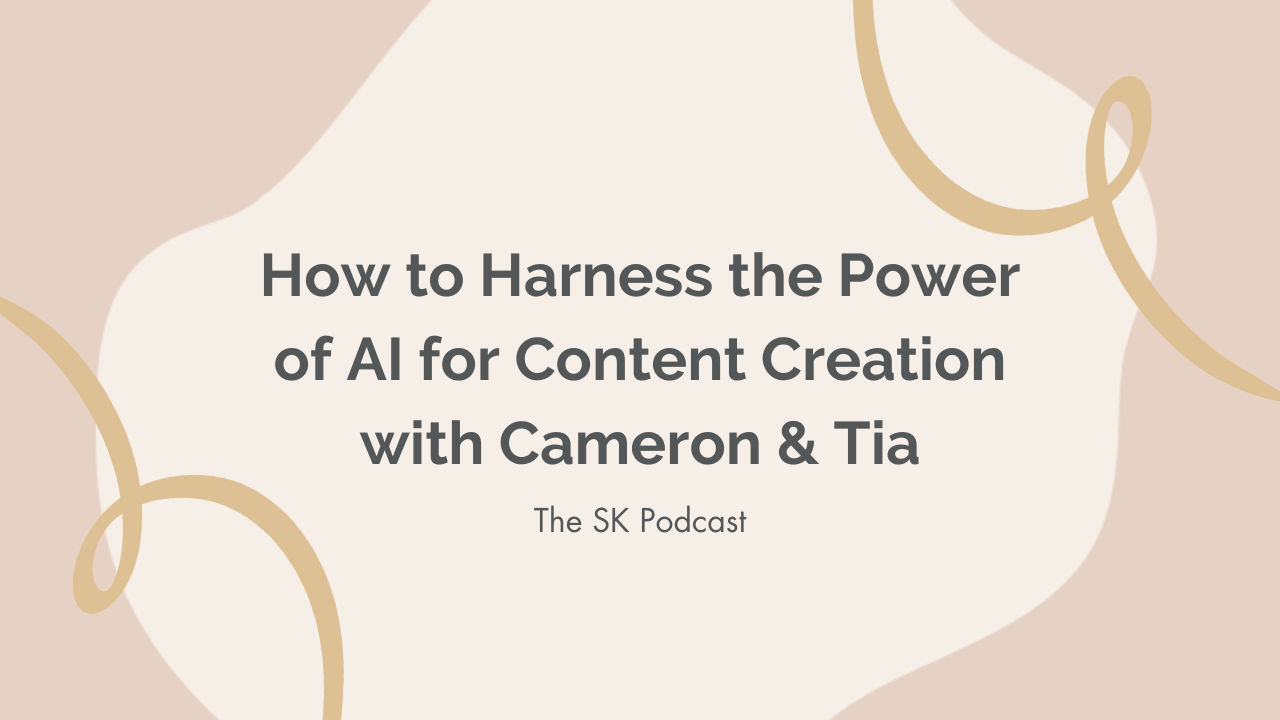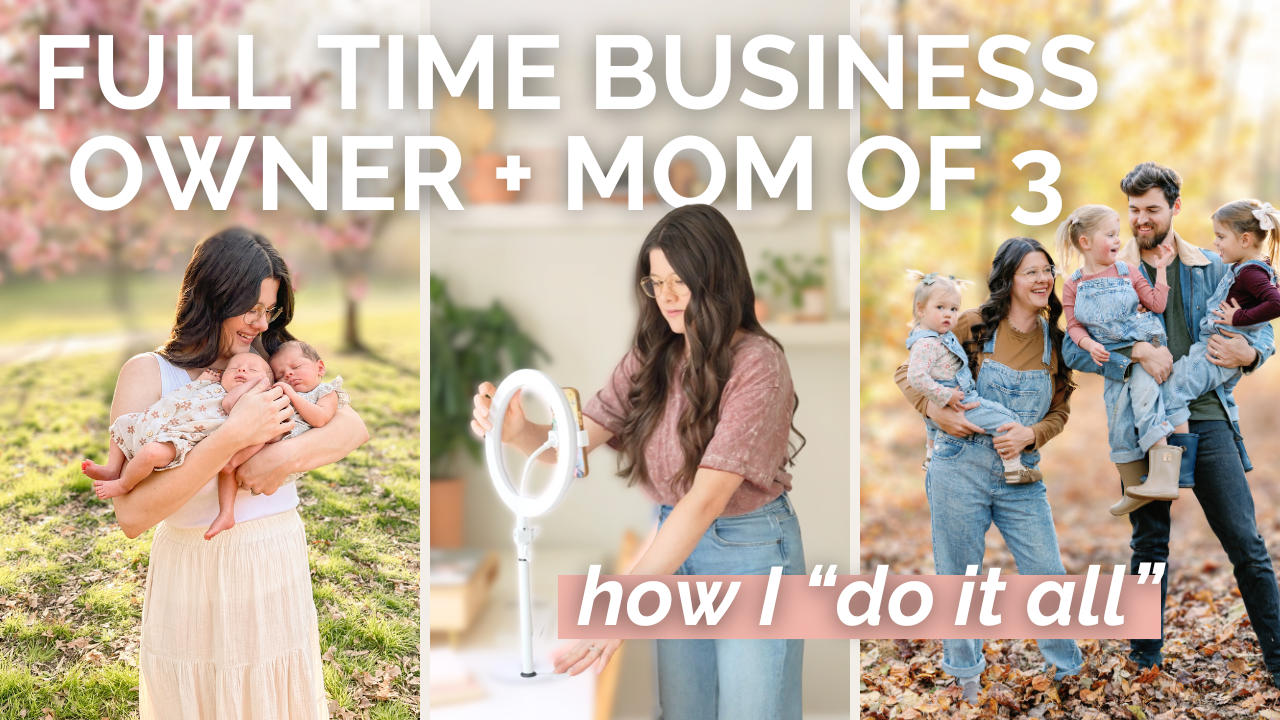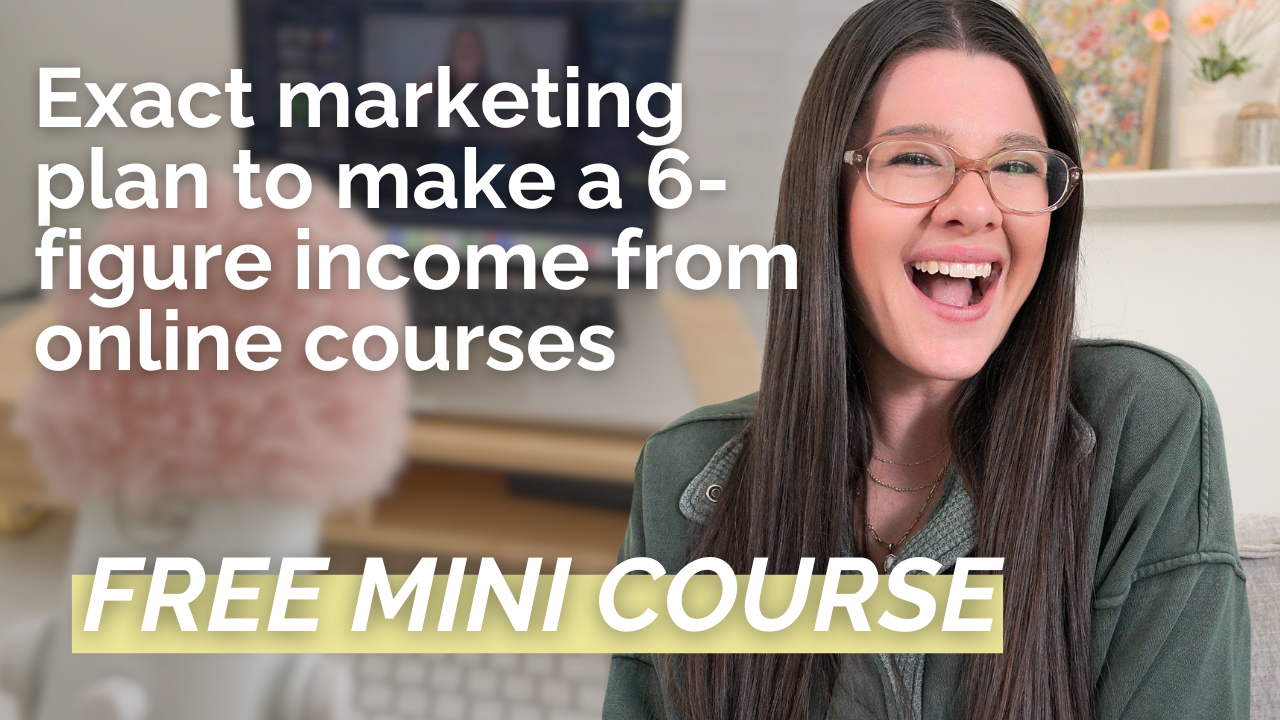We’re back with a special podcast episode today – an interview with Cameron and Tia about how to harness the power of AI for content creation! Cameron and Tia are wedding photographers and business coaches in Minneapolis, MN. They met in second grade and 16 years later, Cameron proposed to Tia at the same elementary school they met at. How sweet is that?! Now, they’re helping other photographers find flexibility and freedom in their own businesses. Let’s chat about how they use AI in their business – and how you can too!
Listen to this episode on Apple Podcasts or Spotify!
So, the first thing that I wanted to talk about is: AI is a bit of a buzzword right now. But yet, it’s been around for a while. What do you think is the benefit of being an early adopter of new tech as a business owner?
Tia: Yeah, absolutely. I will say the newness of AI is really exciting – but I didn’t feel that way at the beginning. Initially, I was so resistant. And Cam is just someone who loves to research and loves to get out there and explore and see what’s happening. I’m very set in my ways, workflows, and rhythms. I love to just like check off tasks. So, when AI started becoming more of a buzzword for business, I told Cam I didn’t feel like it integrated with our business or like I understood. I didn’t know what the point was.
Cam: I think Tia needed to realize how much we already used AI in our life in so many ways. Then ChatGPT came on the scene and it felt bigger and more expansive. But I think it’s important to remember that we’re already using little pieces of this every day and it’s making our lives easier.
So, we began to explore the tools and seeing what was out there. There are a couple of places where early adoption in our business was super powerful – like with Honeybook. We got a founder’s rate early on instead of paying a monthly feel, even as the tool was growing. So that financial gain was insane. Another example was Tik Tok. I could count on one hand the number of portrait photographers who were on there when it first came out. So it was wide open, not saturated. I said “let’s put a bunch of eggs in this basket” and go after it. We were able to grow an audience really quickly on there. That has led to a ton of our students and photographers we’ve coached.
What about someone who doesn’t want to jump on every new thing and put their time and energy there?
100%. I remember when Cubhouse came out. And after I had seen success on tick tock, I thought we had to dump tons of time there. Did it pan out to anything for us? No. We used to have structured days and then all of a sudden I’d go in and be researching instead of editing. So, we had to figure out a way to harness this and determine our time investment and balance. The exploration is important, but we have to take care of what we need, too.
Cam: To defend myself, there has been time my research has paid off. But I do acknowledge that I would get into maybe a workflow editing a wedding and halfway through, I’d wonder if something could help me with flyaway hairs for example. And instead of actually sitting down and other than the wedding, I would maybe spend a couple hours Googling and researching. And sometimes it was a great payoff. Sometimes it was just a complete waste of time.
But we found that allowing myself to be curious was valuable. It was good, both for the business, but also just for me like allowing my mind to go where it wants to go and see all the things that it wants to see is beneficial. So, we wound up building time in our schedule for me to be curious. If I wonder about something, I write it down and know on Friday, I can look into it.
We call it a curiosity hour. So listeners, the easiest way to implement this is to find an hour in your weekly schedule that is just dedicated to the exploring or trying out new tools. It’s nice to know there’s time dedicated to letting yourself explore and play – without feeling guilty.
How do you guys decide if you’re going to implement something when you’re looking at a new tool?
There’s a lot of layers to this because it depends on the tool. One of the first things we recommend doing is trying out ChatGPT. Listen to Stephanie’s episode about it – and play around. Put in a prompt and look at the caption it gives you. Learn how to use it by playing around. What if I try prompting it this way? What if I try adding my voice into it? What if I tried directing it more so more pinpointed? You’ll start to feel like something does (or doesn’t) work for you. You’ll know if it’s a good fit for you – maybe for email subject lines, for example. You’ll start to feel like it might work in your business.
Then I think there has to be a second layer. Once you start putting that into workflows, you start saying, “Okay, I love the way that email subject lines are working, I can see how I can take the first half of this and then put the second half into this and then add my personal touch.” Then you know when you’re writing emails that you’ll go to ChatGPT or whatever tool. You have a very clear sense of how it will work in your business and if it’s saving you time.
Of course, as you’re exploring you’re either trying to fix an issue or prevent an issue. Sometimes you can just test things out to see what you like. You can ask yourself if it might save you time in the future or solve a future issue.
Another thing that comes to mind is just trying something out and seeing the results. Do you get time back and do you see results? That’s another way to see if a product is worth using in your business.
Listen to the full episode for all of their tips about harnessing the power of AI for content creation!
CAMERON & TIA’S RESOURCES
If you’re listening and you have ideas about what to talk about next, please send in your requests! I really do want to know what you want to hear about in future episodes. Email me at [email protected] with your questions!! I can’t wait to hear from you! Don’t forget to leave us a review on Apple Podcasts, too. We appreciate all of the support and love!



